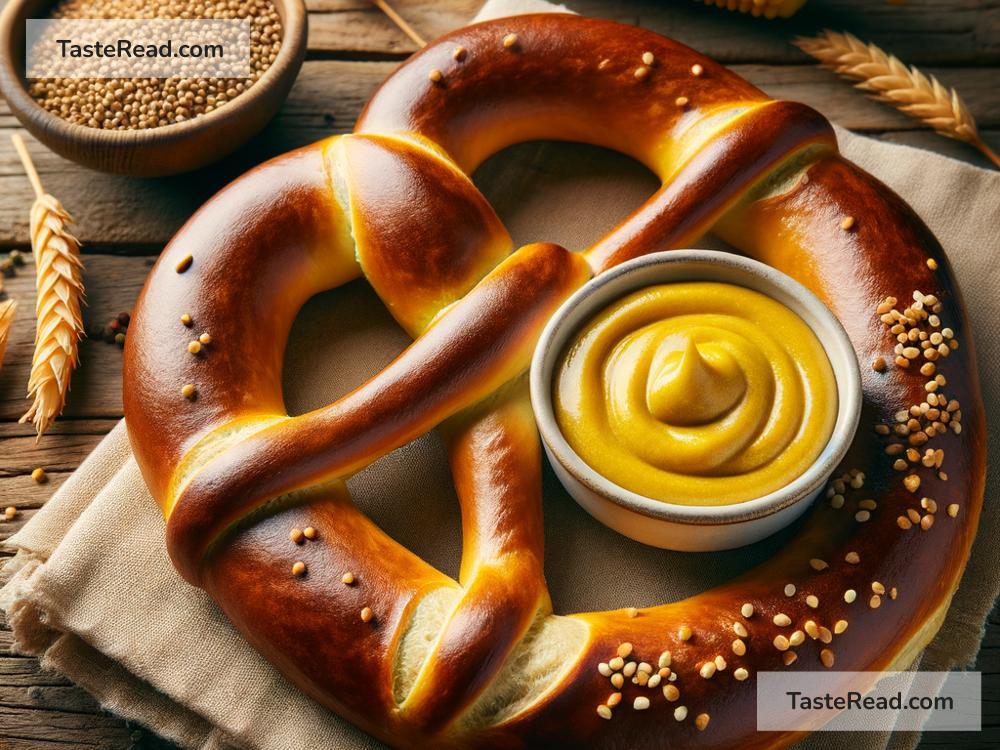Title: The Tasty Journey of the German Pretzel: A Global Snack Sensation
Introduction:
The pretzel, with its distinctive knot shape and deliciously salty crust, is a snack loved by many around the world. But have you ever wondered how this humble snack from Germany turned into a global phenomenon? Grab a pretzel, and let’s embark on the tasty journey of the German pretzel from its origins to becoming a worldwide snack sensation.
The Early Days in Germany:
The story of the pretzel begins in the heart of Europe, in Germany, where it is believed to have been invented by monks as early as the 7th century. These early pretzels were made from simple ingredients: flour, water, and salt. The monks gave them to children as rewards for learning their prayers. The pretzel’s unique knot shape is thought to represent the crossed arms of a person in prayer, connecting this snack deeply with its religious roots.
Growth and Popularity in Europe:
As time went on, the pretzel became more than just a reward for pious children. By the Middle Ages, pretzels had grown in popularity across Europe. In Germany, pretzels were considered a symbol of good luck and spiritual wholeness. They were even used in weddings, where the bride and groom would break a pretzel like a wishbone, believing it would bring prosperity and happiness to their marriage.
The pretzel also became intertwined with Lenten practices. Since pretzels were made without eggs, lard, or dairy, they were the perfect food for the Christian season of Lent when eating those items was abstained. This religious connection helped the pretzel’s popularity grow even further.
Crossing the Atlantic:
The significant shift from the pretzel being a European snack to a global sensation began with the waves of German immigrants moving to the United States in the 19th century. These immigrants, often referred to as “Pennsylvania Dutch,” brought with them their cherished recipes and traditions, the pretzel being one of them.
In the United States, the pretzel quickly embedded itself in the local culture, especially in places like Pennsylvania, where the first pretzel bakery in America was established in the late 1850s. American innovations and the entrepreneurial spirit soon led to the pretzel’s evolution. Soft pretzels became a common sight at street corners, sold as a quick and delicious snack, while hard pretzels emerged as a durable, shelf-stable snack option.
Going Global:
As the 20th century progressed, the pretzel’s global journey hit fast forward. With the rise of global food companies and improved transportation, pretzels found their way into snack aisles around the world. Today, you can find a variety of pretzels, from the traditional soft pretzels sold in German beer gardens to flavored hard pretzels in supermarkets everywhere.
The Versatility of Pretzels:
One of the reasons for the pretzel’s enduring popularity is its versatility. Not only can pretzels be enjoyed in their traditional soft or hard forms, but they also serve as key ingredients in a variety of dishes and snacks. From pretzel buns for sandwiches to crushed pretzels in desserts, the possibilities are endless. This adaptability has helped the pretzel remain a relevant and beloved snack across different cultures and culinary traditions.
The Modern Pretzel:
In today’s global food scene, the pretzel continues to evolve. Gourmet pretzel shops and artisanal bakeries are experimenting with new flavors and toppings, from sweet glazes to spicy mustards. Meanwhile, the healthy eating trend has given rise to pretzels made from alternative grains and lower-sodium recipes, proving that the pretzel can adapt to changing consumer preferences.
Conclusion:
From its humble beginnings in the monasteries of Germany to the snack aisles and gourmet eateries around the world, the pretzel has come a long way. More than just a snack, the pretzel is a cultural symbol that embodies tradition, innovation, and the global exchange of culinary traditions. So next time you enjoy a crunchy pretzel or a soft, buttery one, remember the fascinating journey of how the German pretzel became a global snack sensation.

